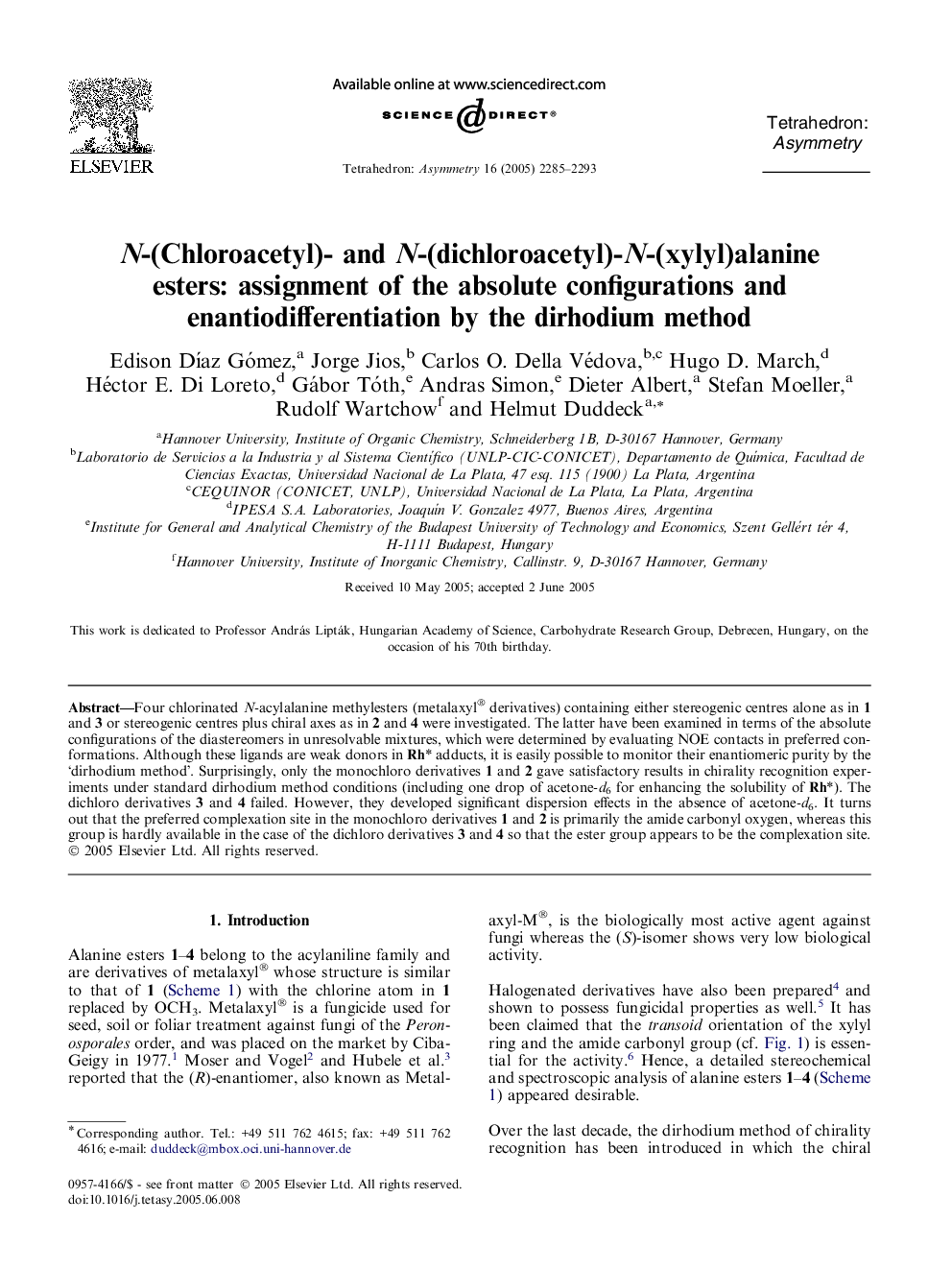| Article ID | Journal | Published Year | Pages | File Type |
|---|---|---|---|---|
| 1349897 | Tetrahedron: Asymmetry | 2005 | 9 Pages |
Four chlorinated N-acylalanine methylesters (metalaxyl® derivatives) containing either stereogenic centres alone as in 1 and 3 or stereogenic centres plus chiral axes as in 2 and 4 were investigated. The latter have been examined in terms of the absolute configurations of the diastereomers in unresolvable mixtures, which were determined by evaluating NOE contacts in preferred conformations. Although these ligands are weak donors in Rh* adducts, it is easily possible to monitor their enantiomeric purity by the ‘dirhodium method’. Surprisingly, only the monochloro derivatives 1 and 2 gave satisfactory results in chirality recognition experiments under standard dirhodium method conditions (including one drop of acetone-d6 for enhancing the solubility of Rh*). The dichloro derivatives 3 and 4 failed. However, they developed significant dispersion effects in the absence of acetone-d6. It turns out that the preferred complexation site in the monochloro derivatives 1 and 2 is primarily the amide carbonyl oxygen, whereas this group is hardly available in the case of the dichloro derivatives 3 and 4 so that the ester group appears to be the complexation site.
Graphical abstractFigure optionsDownload full-size imageDownload as PowerPoint slide
(2R)-N-(Chloroacetyl)-N-(2,6-dimethylphenyl)alanine methyl esterC14H18ClNO3Ee = 100%[α]D20=-45.9±1 (c 0.038, CHCl3)Source of chirality: (S)-methyl lactateAbsolute configuration: 2R
(2R)-N-(Dichloroacetyl)-N-(2,6-dimethylphenyl)alanine methyl esterC14H17Cl2NO3Ee = 100%[α]D20=-20.4±1 (c 0.051, CHCl3)Source of chirality: (S)-methyl lactateAbsolute configuration: 2R
